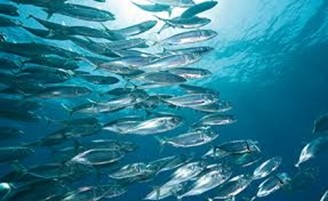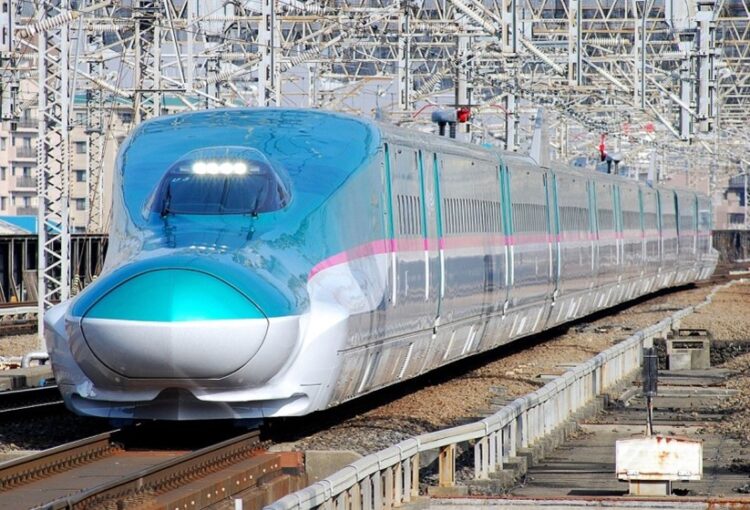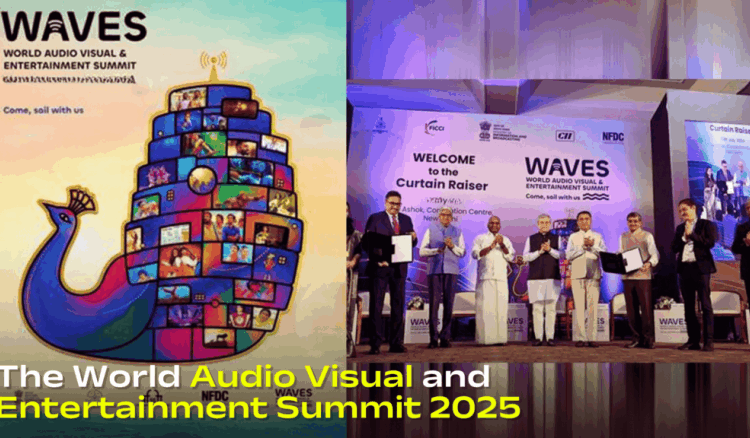National Critical Mineral Mission (NCMM)
Syllabus:Budget
- Driving India’s Strategic Mineral Security & Sustainability
- Launched in: Union Budget 2024–25
- Nodal Ministry: Ministry of Mines, Government of India

Objective: To ensure a secure, resilient, and sustainable supply of critical minerals vital for:
- Clean energy transition
- Technological innovation
- Defence and strategic sectors
- Achieving Net Zero 2070 and Atmanirbhar Bharat goals
Key Focus Areas:
Exploration and Mining
- Over 1200 mineral exploration projects
- Auction of more than 100 mineral blocks for commercial mining
Overseas Asset Acquisition
- Facilitates Indian entities in acquiring mineral assets in countries such as Argentina, Australia, and Chile
Recycling and Circular Economy
- Development of Standard Operating Procedures (SOPs) and incentives for recycling
- Aims to reduce import dependency and minimize environmental impact
Research and Innovation
- Establishment of Centres of Excellence (CoEs)
- Promotes advanced research in extraction, beneficiation, and processing technologies
Skill Development
- Introduction of new academic programs, training modules, and scholarships
- Focus on building a skilled workforce for the critical minerals sector
Infrastructure Development
- Development of mineral processing parks
- Creation of national stockpiles for strategic storage and distribution
With reference to the National Critical Mineral Mission (NCMM), consider the following statements:
- The Mission mandates that all critical mineral block auctions be restricted to public sector undertakings to ensure strategic resource control.
- One of the objectives of the Mission is to reduce import dependence through both domestic exploration and incentivized recycling mechanisms.
- The establishment of Centres of Excellence (CoEs) under the Mission is aimed exclusively at promoting downstream manufacturing of critical mineral-based products.
Which of the statements given above is/are correct?
A. 2 only
B. 1 and 3 only
C. 2 and 3 only
D. 1, 2 and 3
Answer: A. 2 only
Explanation:
- Statement 1 is incorrect. The NCMM does not mandate that auctions be restricted to public sector undertakings. Instead, it promotes both public and private sector participation in exploration and commercial mining to boost the domestic supply of critical minerals.
- Statement 2 is correct. A key objective of NCMM is to reduce India’s import dependency. This is to be achieved through extensive mineral exploration and the promotion of recycling via SOPs and incentives—both of which form integral parts of the circular economy strategy.
- Statement 3 is incorrect. While CoEs are being established under the Mission, their focus is not limited to downstream manufacturing. They are primarily intended to drive advanced research and innovation in extraction, beneficiation, and processing technologies related to critical minerals.
Cap-and-Trade India
Syllabus:Economy
- Context: A recent study published in The Quarterly Journal of Economics confirmed that Surat’s Emissions Trading Scheme (ETS), the world’s first market for particulate emissions, successfully reduced pollution by 20–30% and lowered compliance costs by 11%.
What is Cap-and-Trade?
- Cap-and-Trade is a market-driven environmental policy in which the government sets a maximum limit (cap) on total pollution levels emitted by industries. The system works as follows:
- Pollution Permits: Companies are allocated pollution permits, each allowing them to emit a specific amount of pollutants. If a company emits less than its allotted share, it can sell the unused permits to other firms that are exceeding their limits.
- Financial Incentive: This system encourages companies to reduce emissions efficiently and invest in cleaner technologies, as reducing emissions can generate profit through the sale of unused permits.
How Cap-and-Trade Works:
- Regulatory Cap Setting: The government sets an emissions ceiling based on environmental goals, such as improving air quality or meeting climate targets.
- Permit Distribution: Emission permits are distributed through:
- Free allocation based on historical emissions (grandfathering).
- Auctioning a portion of permits, allowing the market to determine their price.
- Trading System Among Firms: Companies that can cut emissions cost-effectively will do so and sell their excess permits. Firms facing high abatement costs can purchase permits to comply instead of investing in costly technology upgrades.
- Penalties for Non-Compliance: Firms that fail to secure enough permits to match their emissions face financial penalties. This incentivizes compliance, making it cheaper to either reduce pollution or purchase additional permits than to pay fines.

Challenges to the Cap-and-Trade Model:
- Monitoring Gaps: Successful cap-and-trade relies on accurate, real-time emissions data, which requires continuous oversight and maintenance of monitoring systems. For instance, Surat’s success depended on the installation of Continuous Emissions Monitoring Systems (CEMS).
- High Initial Setup Cost: Implementing systems like CEMS can be expensive, especially for small industries. In Surat, 317 industries had to install CEMS.
- Market Manipulation Risks: Without stringent regulations, industries could manipulate permit prices by hoarding them. Surat addressed this issue by introducing weekly auctions to prevent hoarding.
- Sectoral Variations: Pollution abatement costs differ across industries, which may create uneven opportunities for firms to profit from permit trading.
- Policy Instability: Frequent changes in emission caps or trading rules can discourage long-term investments in clean technologies. Surat adjusted its emission cap from 280 to 170 tonnes/month after reviewing pilot phase data.
Way Ahead:
- Expand ETS to Other Cities: Scaling up ETS to other heavily polluted cities like Delhi and Ahmedabad can maximize the impact and establish a nationwide pollution control framework.
- Include More Pollutants: The ETS could be extended to cover other pollutants such as sulfur dioxide (SO₂) and nitrogen oxides (NOx) for a more comprehensive approach to industrial pollution.
- Invest in CEMS Technology: Further investment in tamper-proof and reliable CEMS technology will ensure greater transparency and regulatory efficiency.
- Set Dynamic Emission Caps: Emission caps should be adjusted to accommodate seasonal pollution variations and industrial production cycles for greater effectiveness.
- Enhance Stakeholder Engagement: Active collaboration between industries, local bodies, and citizens through awareness campaigns can ensure broader acceptance and success of the system.
Conclusion:
- Surat’s Emissions Trading Scheme showcases how market-based solutions can effectively balance industrial growth with environmental sustainability. Expanding and refining such initiatives across India could be pivotal in achieving national clean air targets while improving industrial efficiency.
With reference to the Cap-and-Trade model implemented in Surat’s Emissions Trading Scheme (ETS), consider the following statements:
- The government’s role in Cap-and-Trade involves setting a maximum pollution limit and ensuring continuous oversight of emissions data through systems like CEMS.
- The market for pollution permits under Cap-and-Trade is primarily driven by a free allocation method, without the involvement of auctions.
- Surat’s success in implementing the Cap-and-Trade model was dependent on the installation of Continuous Emissions Monitoring Systems (CEMS), which provided real-time data for regulatory enforcement.
Which of the statements given above is/are correct?
A. 1 and 3 only
B. 2 and 3 only
C. 1 and 2 only
D. 1, 2, and 3
Answer: A. 1 and 3 only
Explanation:
Statement 1 is correct: The government sets an emissions ceiling (cap) and plays an essential role in ensuring continuous oversight of emissions through monitoring systems like CEMS. This system is vital for accurate data collection, which underpins the Cap-and-Trade.
Statement 2 is incorrect: The Cap-and-Trade system also involves auctioning a portion of pollution permits, which allows the market to determine their price.
Statement 3 is correct: Surat’s successful implementation of the ETS is largely attributed to the installation of CEMS, which provided accurate, real-time emissions data crucial for monitoring and enforcement.
Ambedkar’s Contributions to Indian Economy
Syllabus:Economy
On the occasion of Ambedkar Jayanti 2025, renewed focus is being given to Dr. B.R. Ambedkar’s pivotal role in shaping India’s economic framework. His contributions in various domains laid the foundation for modern Indian economic policy, especially in the areas of monetary policy, labour rights, land reforms, and Dalit empowerment.

Key Contributions to India’s Economic Thought:
- Monetary Policy and the Reserve Bank of India: Ambedkar’s 1923 work The Problem of the Rupee: Its Origin and Its Solution proposed a gold exchange standard, which influenced the establishment of the Reserve Bank of India in 1934.
- Pioneering Fiscal Federalism:His thesis on Provincial Decentralisation of Imperial Finance in British India (1921) conceptualized financial decentralization, laying the groundwork for the creation of India’s Finance Commission.
- Labour Welfare Reforms:As a Labour Member in the Viceroy’s Executive Council, Ambedkar introduced major labour reforms, including the 8-hour workday, maternity benefits, and dispute resolution boards. He also set up employment exchanges across India to reduce unemployment.
- Water and Power Resource Development: Ambedkar’s vision extended to infrastructure, where he spearheaded projects like the Central Water Commission, the Damodar Valley Project, and the Hirakud Dam, linking water management to economic progress.
- Land Reforms and Dalit Empowerment: He advocated for land distribution among Dalits and the creation of separate settlements to ensure economic independence. His proposals included nationalization of land and collectivization of agriculture.
- Economic Justice and Social Democracy: Ambedkar strongly argued that economic empowerment is essential for social dignity, asserting that true social democracy cannot exist without economic justice.
- Industrialization and Modernization: Supporting state-led industrialization, Ambedkar saw it as a way to create employment opportunities and address caste-based occupational segregation.
- Anti-Inflationary Policies:He recognized inflation as a major issue that disproportionately impacts the poor, advocating for responsible monetary policies—a principle reflected in India’s modern inflation-targeting framework, such as the 2016 Monetary Policy Framework.
- Ambedkar’s economic vision laid the groundwork for a more inclusive, equitable economic structure, advocating policies that prioritized both social and economic justice.
Consider the following statements regarding Dr. B.R. Ambedkar’s contributions to India’s economic thought:
- Ambedkar’s work on monetary policy directly influenced the establishment of the Reserve Bank of India in 1934.
- He proposed the nationalization of agriculture to break caste-based occupational immobility.
- Ambedkar’s vision of fiscal federalism focused solely on centralized financial control to ensure efficient resource distribution.
Which of the statements given above is/are correct?
A. 1 and 2 only
B. 2 and 3 only
C. 1 only
D. 1, 2, and 3
Answer: A. 1 and 2 only
Explanation:
- Statement 1 is correct: Dr. Ambedkar’s The Problem of the Rupee (1923) advocated for a gold exchange standard, which directly influenced the establishment of the Reserve Bank of India in 1934.
- Statement 2 is correct: Dr. Ambedkar advocated for land reforms, including land redistribution and the collectivization of agriculture, to empower Dalits and ensure their economic independence.
- Statement 3 is incorrect: Ambedkar’s vision of fiscal federalism was focused on decentralization, and he conceptualized financial decentralization through the creation of the Finance Commission, not centralizing financial control.
Justice Kurian Joseph Committee
- Syllabus:Polity
- In a significant political and constitutional development, Tamil Nadu Chief Minister M.K. Stalin has constituted a high-level committee chaired by former Supreme Court judge Justice Kurian Joseph to reassess Centre–State relations.
- This initiative is aimed at safeguarding the constitutional rights and autonomy of states within the Indian Union, reflecting a long-standing concern over the erosion of federal principles.
Historical Precedent: The Rajamannar Committee (1969)
- This move echoes the path laid down by former Tamil Nadu Chief Minister C.N. Annadurai, whose government established the Centre–State Relations Inquiry Committee under the chairmanship of Dr. P.V. Rajamannar in 1969. This was the first comprehensive state-level review of federal dynamics in India.
- The Rajamannar Committee concluded that while the Constitution embodies a federal framework, its operational reality reflects excessive centralisation. It identified Articles 256, 257, and 365—which empower the Centre to issue directions to states—as central to this imbalance.
Key Recommendations:
- Repeal of Article 356: The Committee called for the abolition of the provision enabling the imposition of President’s Rule in states, viewing it as a tool of political misuse.
- Creation of a Permanent Inter-State Council: To institutionalize Centre–State dialogue and reduce unilateralism.
- Limiting Central Institutions’ Overreach: It criticized the discretionary powers of bodies like the Planning Commission (now defunct), which undermined the constitutionally mandated Finance Commission and increased state dependency.
- The Committee rejected the notion that centralisation equates to national strength, warning that such overreach erodes the Union’s integrity. It instead advocated for cooperative federalism, anchored in constitutional restraint and respect for state sovereignty.
Contemporary Context and Political Undercurrents
- The formation of the new committee comes amid intensifying disputes between Tamil Nadu and the Union Government, especially on contentious issues such as:
- NEET (medical entrance policy),
- GST compensation delays, and
- Language imposition
- These tensions signal growing concerns over asymmetrical federalism, particularly in opposition-led states.
The Road Ahead: Restoring the Federal Balance?
- The new committee is expected to study constitutional provisions, institutional mechanisms, and recent central policies to recommend steps that restore the federal balance. However, implementation remains uncertain, given the historical neglect of earlier commission reports, including the Rajamannar Committee and the Sarkaria Commission (1983) and Punchhi Commission (2007).
- Nonetheless, the formation of this committee underscores a renewed call for federal revitalisation—placing autonomy, fiscal empowerment, and cooperative governance at the centre of India’s democratic discourse.
With reference to the Rajamannar Committee’s recommendations on Centre–State relations, consider the following statements:
- The committee argued that the Finance Commission’s role had been constitutionally diluted due to the discretionary powers exercised by the Planning Commission.
- It endorsed the use of Article 356 as a necessary constitutional safeguard against political instability in the states.
- The committee proposed the establishment of an Inter-State Council to institutionalize federal dialogue beyond mere administrative coordination.
Which of the statements given above is/are correct?
A. 1 and 2 only
B. 1 and 3 only
C. 2 and 3 only
D. 1, 2 and 3
Answer: B. 1 and 3 only
Explanation:
- Statement 1 is correct: The Rajamannar Committee highlighted how the Planning Commission’s discretionary grant-giving powers diminished the relevance of the constitutionally mandated Finance Commission.
- Statement 2 is incorrect: The committee opposed Article 356 and recommended its repeal, arguing that it undermined federalism.
- Statement 3 is correct: The committee advocated for a permanent and empowered Inter-State Council to facilitate structured Centre–State dialogue.
Fisheries Development Initiatives Under PM Matsya Sampada Yojana
Syllabus:Scheme
- Launched in 2020, the Pradhan Mantri Matsya Sampada Yojana (PMMSY) is a flagship initiative aimed at transforming India’s fisheries sector through modernization, sustainability, and socio-economic empowerment of stakeholders.
- With a total outlay of ₹20,050 crore, the scheme is set to operate until 2025, representing one of the most comprehensive government efforts to harness the potential of the blue economy.

Structural Components of PMMSY
The scheme is bifurcated into two implementation models:
- Central Sector Scheme (CS): Entirely financed by the Union Government, this component undertakes national-level activities like policy reforms, deep-sea fishing, and technology adoption.
- Centrally Sponsored Scheme (CSS): Jointly funded by the Centre and States/UTs, this component covers diverse projects such as infrastructure development, post-harvest management, and fisher welfare.
Recent Developments and Innovative Interventions
In Karaikal, the Union Minister George Kurian recently launched several PMMSY initiatives, including:
- Establishment of artificial reefs to enhance marine biodiversity and coastal livelihoods.
- Financial support for mechanized boats, life-saving equipment, and climate-resilient housing.
- Collaboration with institutions such as IIT-Madras to advance R&D in sustainable fisheries practices.
- These steps align with the scheme’s thrust on resilience, technology adoption, and community empowerment.
Broad-Based Beneficiary Coverage
- PMMSY targets a wide stakeholder base, including:
- Traditional and inland fishers, aquaculture farmers, and processing workers.
- Cooperatives, self-help groups, and entrepreneurial entities involved in the fisheries value chain.
- Special attention is given to marginalized coastal and inland communities, ensuring inclusive development.
Macroeconomic Relevance
- The fisheries sector contributes significantly to India’s Gross Value Added (GVA) and exports.
- In FY 2022–23, India achieved 175.45 lakh tonnes in fish production, making it the third-largest producer globally.
- The sector supports around 30 million people, offering both livelihood security and nutritional support.
Vision and Future Roadmap
- PMMSY is aligned with the government’s long-term goal of “Viksit Bharat @2047” and envisions:
- Doubling fish production and boosting exports to ₹1 lakh crore.
- Enhancing income of fishers and reducing post-harvest losses.
- Creating a climate-smart, resilient, and technology-enabled fisheries ecosystem.
Technology as a Force Multiplier
- Deployment of drone technology for inland fish seed transportation.
- Utilization of ISRO’s satellite data to help fishermen identify Potential Fishing Zones (PFZs).
- Emphasis on digital traceability, eco-labelling, and smart cold-chain logistics.
In the context of PMMSY, which of the following technological interventions serve both ecological and livelihood objectives?
- Establishment of artificial reefs
- Use of ISRO’s satellite-based Potential Fishing Zone data
- Drone deployment for inland seed transportation
- Climate-resilient housing for fishers
Select the correct answer using the code below:
A. 1, 2 and 3 only
B. 2, 3 and 4 only
C. 1 and 2 only
D. 1, 2, 3 and 4
Answer: D. 1, 2, 3 and 4
Explanation: All four interventions mentioned contribute to both ecological and socio-economic goals. Artificial reefs improve marine biodiversity and fish stock, benefiting coastal livelihoods. ISRO’s satellite data enhances fish catch efficiency. Drone tech supports inland aquaculture logistics. Climate-resilient housing reduces disaster vulnerability for fishers. Together, they integrate environmental sustainability with economic resilience.
PEN-Plus Strategy Enhances NCD Care in Africa
Syllabus:Schemes
- In recent years, non-communicable diseases (NCDs) have emerged as a significant public health challenge across the WHO African Region.
- A recent report by the World Health Organization (WHO) has highlighted the effectiveness of the PEN-Plus strategy—an integrated, decentralised approach to managing severe NCDs at the primary and secondary healthcare levels.
- Since its adoption, 20 African nations have strengthened their healthcare systems, enhancing access to life-saving services for populations historically underserved.

Understanding Non-Communicable Diseases (NCDs):
- NCDs are long-term chronic conditions not caused by infectious agents.
- Their progression is often slow and influenced by genetic predisposition, environmental exposures, and behavioural risk factors.
- Major NCDs include cardiovascular diseases, diabetes, chronic respiratory illnesses, and cancers.
- While NCDs account for 71% of global mortality, their contribution to overall deaths in African countries ranges widely—from 27% to 88%, underscoring deep disparities in healthcare access and disease burden.
The PEN-Plus Framework:
- The PEN-Plus initiative builds upon the WHO’s broader Package of Essential Non-communicable Disease Interventions (PEN), extending its scope to cover severe and chronic NCDs.
- Originating in Rwanda, the model focuses on bringing essential diagnostics, treatment, and psychosocial care closer to communities—particularly those living in extreme poverty.
- It empowers mid-level healthcare providers at district hospitals and health centres through structured training programmes, ensuring that severe conditions are not excluded from primary care systems.
Implementation and Tangible Outcomes:
- The strategy has gained traction in countries such as Liberia, Malawi, and Rwanda, with encouraging results.
- As of January 2025, over 15,000 patients have received care under the PEN-Plus model.
- In Malawi, national roll-out has seen the training of over 440 clinicians, with six district-level facilities currently managing more than 300 patients with complex NCDs.
- This marks a significant shift toward health equity in the region.
Persistent Challenges and Strategic Priorities:
- Despite measurable progress, substantial gaps remain.
- Many children and young adults continue to succumb to preventable and treatable NCDs, primarily due to delayed diagnosis and lack of local treatment options.
- The WHO report calls for sustained investment, inter-governmental coordination, and prioritisation of NCDs in national and international policy agendas.
- Strengthening political will and mobilising global partnerships are imperative to ensure long-term success.
Building Resilient Health Systems:
- At the core of PEN-Plus lies a vision for sustainable, decentralised health systems.
- The approach emphasises the need for standardised clinical protocols, reliable access to essential medicines and technologies, and scalable infrastructure at district-level hospitals.
- By bridging the treatment gap for severe NCDs, the model contributes significantly to universal health coverage (UHC) and the broader goals of health justice in sub-Saharan Africa.
With reference to the PEN-Plus strategy endorsed by the WHO for managing non-communicable diseases (NCDs) in Africa, consider the following statements:
- The PEN-Plus model focuses exclusively on communicable diseases with chronic manifestations such as tuberculosis.
- The strategy is designed to deliver care for severe NCDs at secondary and tertiary hospitals only.
- A core feature of PEN-Plus is the empowerment of mid-level healthcare providers at district-level facilities through structured training.
Which of the statements given above is/are correct?
A. 1 and 2 only
B. 3 only
C. 2 and 3 only
D. 1, 2 and 3
Answer: B. 3 only
Explanation:
- Statement 1 is incorrect because PEN-Plus is specifically targeted at severe non-communicable diseases, not communicable diseases like tuberculosis.
- Statement 2 is incorrect as the model decentralises care by focusing on primary and secondary health facilities, not tertiary hospitals alone.
- Statement 3 is correct. The strategy emphasises training mid-level providers at district hospitals to ensure equitable delivery of care to underserved populations.
Japan’s High-Speed Train Collaboration with India
Syllabus:IR
- India is poised to advance its high-speed rail infrastructure with strategic support from Japan, which has agreed to provide two Shinkansen trains—models E5 and E3—free of cost. These trains will serve as test platforms for the Mumbai–Ahmedabad High-Speed Rail (MAHSR) corridor, India’s inaugural bullet train project.
Shinkansen: Hallmark of Technological Precision
- The Shinkansen, Japan’s pioneering high-speed rail network, commenced operations in 1964, aligning with the Tokyo Olympics. Known globally for their operational excellence, these trains combine high velocity (up to 320 km/h for E5) with unparalleled safety standards. The E3 model, while an older generation, continues to demonstrate reliable engineering and robust safety features.

Strategic Deployment and Data-Driven Development
- The E5 and E3 units, scheduled for delivery to India in early 2026, will be outfitted with advanced inspection and data acquisition systems. These systems will monitor diverse environmental and operational conditions in Indian terrain. Insights from this testing phase will inform the design of the next-generation E10 trains, projected to enter service in the early 2030s.
Financial Architecture of the MAHSR Project
- The Mumbai–Ahmedabad corridor is predominantly financed through a concessional loan provided by the Japan International Cooperation Agency (JICA), covering nearly 80% of the project’s initial estimated cost of 1.8 trillion yen. With cost escalations over time, both nations are negotiating a revised funding framework to sustain project momentum.
Historical Legacy of Shinkansen
- The Tokyo–Osaka Shinkansen line, the world’s first of its kind, dramatically reduced intercity travel time and set the global benchmark for high-speed rail systems. Since then, Japan’s network has expanded extensively, integrating major urban centres through a system renowned for punctuality, safety, and technological resilience.
Engineering Challenges and Innovations
- Japan’s seismic vulnerability has necessitated state-of-the-art rail engineering, with Shinkansen trains incorporating seismic detection and automatic braking systems. Notably, no fatal derailments have occurred due to earthquakes since the system’s inception, underscoring its rigorous safety protocols.
Global Technological Diffusion
- The Shinkansen model has had a transformative influence on global rail systems. Countries such as France, China, and Spain have adopted or adapted similar technologies. China, in particular, has developed the world’s most extensive high-speed rail network, often building on foundational research from nations like Japan.
Future Trajectories: From ALFA-X to Maglev
- Japan continues to push the boundaries of rail innovation. The ALFA-X prototype, currently under testing, aims to reach operational speeds of 400 km/h. Furthermore, Japan’s maglev (magnetic levitation) project—the Chuo Shinkansen—is set to revolutionise intercity travel, significantly reducing journey times through ultra-high-speed, contactless rail systems.
With reference to India’s collaboration with Japan on high-speed rail technology, consider the following statements:
- The Shinkansen E5 and E3 models provided to India will be used exclusively for passenger operations on the Mumbai–Ahmedabad corridor after 2026.
- The concessional loan from the Japan International Cooperation Agency (JICA) initially financed over three-fourths of the Mumbai–Ahmedabad bullet train project’s total cost.
- Japan’s ALFA-X and maglev train projects represent the next phase in high-speed rail, but both are already operational on select domestic routes.
- India’s adoption of Shinkansen technology is intended not only to reduce travel time but also to test resilience under seismic and environmental stress, based on local terrain.
Which of the statements given above is/are correct?
A. 1 and 3 only
B. 2 and 4 only
C. 2 only
D. 1, 2 and 4 only
Answer: B. 2 and 4 only
Explanation:
- Statement 1 is incorrect. The E5 and E3 Shinkansen units being provided to India are not intended for direct passenger use but for testing purposes, particularly for environmental data collection and system calibration for the Mumbai–Ahmedabad bullet train corridor.
- Statement 2 is correct. The project is majorly funded by a low-interest loan from JICA, covering approximately 80 percent (or over three-fourths) of the original estimated cost of the bullet train corridor, making this a correct assessment of the financial architecture.
- Statement 3 is incorrect. Although Japan is developing advanced systems like ALFA-X and maglev trains, neither is yet operational for commercial service. They remain in testing or construction phases, especially the Chuo Shinkansen maglev project.
- Statement 4 is correct. One of the key objectives behind adopting and modifying Shinkansen technology for India is to evaluate how it performs in the Indian environmental and seismic context, especially given the subcontinent’s diverse topography and climatic conditions.
WAVES 2025 - Anti-Piracy Challenge
Syllabus:Geography
Context: The Anti-Piracy Challenge, a flagship programme under the Create in India Challenge, has been launched as part of WAVES 2025 (World Audio Visual and Entertainment Summit). Organised by the Ministry of Information and Broadcasting, the summit will be held in Mumbai, Maharashtra, from May 1 to 4, 2025. The initiative seeks to promote the development of advanced indigenous technologies to tackle digital piracy.

Objective of the Challenge:
The Anti-Piracy Challenge is specifically designed to encourage innovation in digital content protection, focusing on technologies such as digital fingerprinting, watermarking, and other mechanisms to counteract the increasing threat of piracy in India’s growing digital entertainment ecosystem.
About WAVES 2025:
WAVES is a premier global platform initiated by the Government of India to position the country as a leader in media innovation, intellectual property (IP) creation, and digital content development. The event showcases India’s capabilities across a wide array of sectors, including:
- Traditional Media: Broadcasting, Television, Radio, Films
- Digital and Creative Arts: Animation, Gaming, Comics, Advertising
- Emerging Technologies: Generative AI, Augmented/Virtual/Extended Reality (AR/VR/XR), Digital Platforms
Significance of the Initiative:
- The initiative aligns with India’s broader vision to harness the creative economy, currently valued at USD 30 billion, which supports nearly 8% of the national workforce.
- It reinforces India’s strategic push toward self-reliance in the Media and Entertainment (M&E) sector, which is projected to grow to USD 44.2 billion by 2028, already ranking as the 5th largest globally.
- Through initiatives like the Anti-Piracy Challenge and WAVES 2025, the Government seeks to foster a robust framework for content innovation, employment generation, and technological leadership in digital media.
With reference to the “Anti-Piracy Challenge” under the Create in India initiative, consider the following statements:
- The Anti-Piracy Challenge is a key component of the WAVES 2025 summit aimed at promoting indigenous innovation in digital content security.
- The challenge is primarily focused on advancing technologies like fingerprinting and watermarking to combat the rise of digital piracy in India’s entertainment sector.
- WAVES 2025 will be held in New Delhi, and it covers only the sectors of broadcasting and television.
- The initiative aims to position India as a global leader in the creative economy, which is expected to contribute significantly to the Media and Entertainment sector.
Which of the statements given above is/are correct?
A. 1, 2, and 4 only
B. 1 and 3 only
C. 2 and 4 only
D. 1, 2, 3, and 4
Answer: A. 1, 2, and 4 only
Explanation:
- Statement 1 is correct. The Anti-Piracy Challenge is indeed a flagship initiative under the Create in India programme, which will be highlighted during the WAVES 2025
- Statement 2 is correct. The initiative aims to enhance fingerprinting and watermarking technologies to address digital piracy in India’s entertainment sector.
- Statement 3 is incorrect. WAVES 2025 is to be held in Mumbai, not New Delhi, and it encompasses a wide array of sectors, not just broadcasting and television.
- Statement 4 is correct. The initiative aligns with India’s broader goal of becoming a global leader in the creative economy, which plays a pivotal role in the growing Media and Entertainment sector.
Karad Sanitary Waste Management Model
Syllabus:Environment
What is it?:
- Karad city in Maharashtra’s Satara district has pioneered a comprehensive system for the safe segregation, collection, and disposal of sanitary and biomedical waste.
- This model sets a national benchmark for waste management.

How it Works:
- Collection: Red bins are strategically placed at public toilets, and garbage vehicles are equipped with dedicated bins specifically for sanitary waste.
- Processing: The collected waste is transported to a Common Biomedical Waste Treatment Facility (CBWTF) managed by the Karad Hospital Association. The waste is incinerated at temperatures of up to 1200°C to ensure safe disposal.
- Monitoring: The State Pollution Control Board ensures real-time oversight, guaranteeing compliance with environmental standards.
- Community Engagement: The model promotes women’s health through awareness campaigns led by women. Schools are equipped with sanitary facilities, such as vending machines and incinerators.
- PPP Model: The municipal council handles waste collection, while the hospital association is responsible for the incineration process, which is offered free of cost to citizens.
Significance: The Karad model promotes hygiene, enhances women’s health, and ensures environmental safety. It serves as a scalable solution for smaller and medium-sized cities looking to improve sanitary waste management efficiently.
Consider the following statements regarding Karad city’s sanitary waste management model:
- The model is based on a public-private partnership (PPP) framework where the municipal council handles the waste collection and the hospital association is responsible for incineration.
- The sanitary waste is incinerated at temperatures of up to 500°C in the Common Biomedical Waste Treatment Facility (CBWTF).
- The initiative has led to significant improvements in hygiene, women’s health, and environmental safety, serving as a scalable model for small and medium cities.
Which of the statements given above is/are correct?
A. 1 and 2 only
B. 1 and 3 only
C. 2 and 3 only
D. 1, 2, and 3
Answer: B. 1 and 3 only
Explanation:
- Statement 1 is correct. The model operates on a public-private partnership (PPP) structure, where the municipal council handles the collection of sanitary waste, while the hospital association is responsible for the incineration
- Statement 2 is incorrect. The waste is incinerated at temperatures up to 1200°C, not 500°C, to ensure safe and complete disposal.
- Statement 3 is correct. The model promotes hygiene, improves women’s health, and ensures environmental safety. It has also proven to be a scalable model for other small and medium cities to adopt for efficient sanitary waste management.
